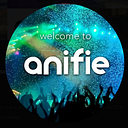Overview of Web Crawling Technologies for Generative AI

Introduction
Web crawling is a critical technique for automatically collecting information from the web, serving as the foundation for data-driven applications in generative AI. It requires proficiency in network technologies, web technologies, and programming languages like Python and Clojure. The goal is to retrieve HTML source code from web pages and extract relevant information using various languages and tools.
Types of Web Crawling
Static Web Crawling: This method retrieves static web pages and extracts information from the HTML source code. Libraries commonly used in Python for this purpose include Requests and BeautifulSoup.
Dynamic Web Crawling: Dynamic web crawling deals with web pages generated by JavaScript or other client-side technologies. It automates browsers to retrieve dynamically generated content, often using libraries like Selenium.
API-Based Web Crawling: This method involves collecting data using APIs provided by websites. This approach is efficient, bypassing the need to parse HTML source code directly.
Application Examples in Generative AI
Search Engines: Web crawling is fundamental for search engines, which gather and index web information to provide relevant search results.
News Aggregation: Media outlets use web crawling to gather articles from various sources, presenting them collectively on their platforms.
Price Comparison Sites: These sites collect product data from multiple e-commerce platforms to offer price comparisons and product information.
Social Media Analysis: Web crawling is used to collect and analyze data from social media platforms, providing insights into trends and user opinions.
Recruitment: Companies use web crawling to gather job postings from various sites, aiding in recruitment efforts.
AI Training Data Collection: Web crawling can automate the collection of large datasets required for training generative AI models, improving the models’ accuracy and performance.
Enhancing Web Crawling with AI
Automatic Page Analysis: AI can automatically analyze the structure and language of web pages, enhancing the efficiency of web crawling by reducing the need for manual rule setting.
Automated Information Collection: AI techniques can extract text from images, convert audio to text, and collect information more accurately and quickly from web pages.
Automated Information Classification: AI can classify collected information, such as categorizing topics or products, making analysis more efficient.
Automated Learning: AI can learn from crawled data, using machine learning to analyze web pages’ structure and content more precisely, and utilizing natural language processing to understand and extract meaningful information.
Implementation Steps
Creating a Crawler: Develop a crawler to navigate web pages, download their content, and analyze them. This involves programming languages like Python and Clojure.
Page Analysis: Extract necessary information from downloaded web pages using knowledge of HTML, CSS, and XPath. Libraries like BeautifulSoup and Scrapy in Python are commonly used.
Data Extraction: Extract relevant data, such as product names and prices, using regular expressions and natural language processing techniques.
Data Storage: Store extracted data in databases or files. This involves database technologies and file I/O operations.
Schedule Automation: Automate the crawling process using tools like cron to run the crawler at regular intervals.
Implementation in Python
Here is an example of implementing web crawling using Python, focusing on scraping Google search results with Scrapy:
pip install beautifulsoup4
pip install scrapyimport scrapy
from scrapy.exporters import CsvItemExporter
class GoogleSpider(scrapy.Spider):
name = "google"
allowed_domains = ["google.com"]
start_urls = [
"https://www.google.com/search?q=python",
]
def parse(self, response):
exporter = CsvItemExporter(open('results.csv', 'wb'))
for result in response.css('div.g'):
data = {
'title': result.css('h3::text').extract_first(),
'url': result.css('h3 a::attr(href)').extract_first(),
'description': result.css('span.st::text').extract_first(),
}
exporter.export_item(data)
yield dataTo run the crawler:
scrapy crawl googleImplementation in Clojure
Since Clojure runs on the Java Virtual Machine, Java libraries can be utilized for web crawling. Below is an example using clj-http for HTTP requests and jsoup for HTML parsing:
(ns myapp.crawler
(:require [clj-http.client :as http]
[org.jsoup.Jsoup :as jsoup]))
(defn get-page [url]
(let [response (http/get url)]
(if (= (:status response) 200)
(:body response)
(throw (ex-info "Failed to retrieve page" {:url url})))))
(defn extract-data [html]
(let [doc (jsoup/parse html)]
(map #(str (.text %) ", " (.attr % "href")) (.select doc "a"))))
(let [url "https://www.example.com"
html (get-page url)
data (extract-data html)]
(println data))Conclusion
Web crawling is a versatile technique essential for various generative AI applications. By leveraging static and dynamic web crawling, as well as API-based methods, vast amounts of data can be gathered for AI training and analysis. Integrating AI technologies enhances the efficiency and accuracy of web crawling, making it an invaluable tool for developing sophisticated AI models.
Author: Samuel A. Ajiboye for anifie.com
